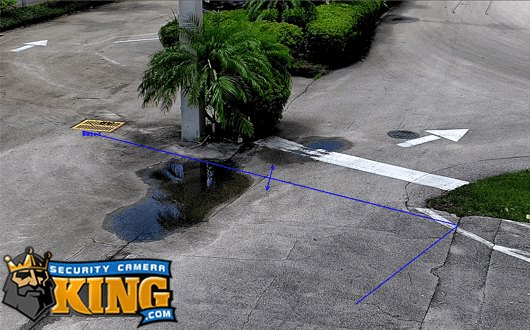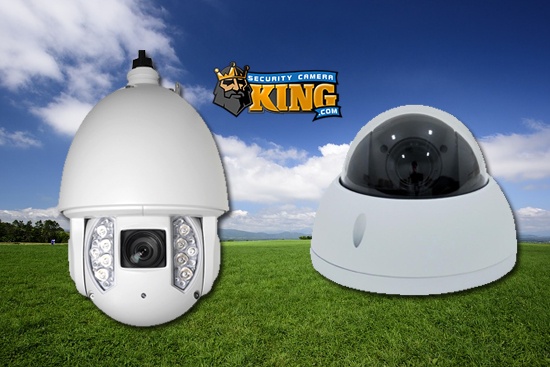Reduce False Alerts with SCK!
CCTV alerting you when it shouldn’t can be a huge problem, and Security Camera King is going to explain how to reduce false alerts!
First of all a bit about who we are- we are Security Camera King. If you’re a first time reader of one of our articles you may not be familiar with us. We are the USA’s number one online retailer of Security Camera equipment as well as related security accessories, networking tools, and access control hardware too. In order to be able to properly sell and supply these items to our amazing customers, we need to have a through understanding of these technologies ourselves. So we have worked tirelessly to create a set of articles, and video tutorials as well describing many facets for setting up, using, and installing our equipment. Further we have a dedicated technical support team working 9am to 6pm Monday through Friday available free of charge to our existing customers. It takes a lot of knowledge and experience to make this possible and be as successful as we have, which means you can trust our advice on CCTV!
So lets talk about alerting and why its so important to reduce false alerts. Afterwards we can give you some ideas on how this is best accomplished.
So alerting, why is it so critical to your CCTV system? CCTV is Closed Circuit Television. Closed Circuit means that the signal is localized to just the area and physical connections allowed by the installers and users. When television broadcast was still a newly regulated idea, security camera systems which utilized similar broadcast methods needed a title to specify that they would not be accessible by normal television channel tuning, but would be only available to the local connections.
CCTV was created primarily for the purpose of security cameras, and the whole idea of alerting was and would have been a foreign concept to the oldest/first CCTV systems in place. Today, CCTV is no longer a series of televisions tyle connections but the name for the technology has kept as a holdover. However its likely more accurate to refer to these systems as Security Camera Systems, especially given that all modern systems are using some form of digital communication and recording. This is what makes alerting possible in the first place, digital technology.
Today’s CCTV systems work with DVRs and Digital over COAX cameras or NVRs and IP/Network based cameras. The Cameras themselves and/or the recorders are capable of powerful technologies which allow them to provide things like remote viewing, and yes alerting.
The processing power in DVRs, NVRs, and IP cameras allows them to utilize tools to track footage in ways like never before. For example, just about every single CCTV system we carry today is capable of motion detection. Motion detection works by analyzing each frame of video that is recording and coming in live. When comparing the incoming frame to the previous frame, if there is a significant enough change in the image in pixel placement, this is considered “motion” in the scene. Now, this can cause many different triggers, but among the most common of them are active recording, 24/7 recording plus motion logging, and of course alerts! Simply put, an alert is when a rule trigger on your CCTV system is activated and there is some way of instantly letting you, the user, know this incident has occurred thus ‘alerting’ you.
There are some drawbacks possible from this despite its overwhelming benefit, and that is why you’d want to be able to reduce false alerts. False alerts, aren’t necessarily false as in they aren’t true or real, but more to the point, they are alerts that occur when one probably definitely wouldn’t want them to occur. For example, if you have a camera looking at your backyard, you probably aren’t very concerned with if a stray cat, or s squirrel comes through your yard at 2 am, nor would you want to be awoken to be notified of this. However, if you have motion detection configured, but not to your exact needs and specifications, you might get alerts for when exactly these types of circumstances occur. Obviously you don’t want to disable motion detection entirely, but the false alerts could get very annoying, or obnoxious if left unchecked. So then, how does one reduce false alerts?
Frist if using motion detection, try using the newest SMD technology on our best systems, also known as Smarts Motion Detection. Powered by an AI algorithm SMD works by eliminating any motion targets that aren’t people or vehicles. This means you’ll get far less triggers, and you can even further edit motions sensitivity settings to be more in line with your goals.
Additionally there are other tools for alerting entirely such as Intelligent Video Surveillance rules like Tripwire and Intrusion box. Also Known as IVS, Intelligent Video Surveillance provides you the ability to draw lines and boxes on the camera view. This means that the alerting and reactions will only occur under far more specific circumstances.
Lastly for all the options you have the ability to schedule when you want these rules to occur, and you can even temporary disable alerts entirely by going to your CCTV systems smartphone app and simply turning the slider off.
Thanks for joining us today as wek discussed the best ways to reduce false alerts! For any questions don’t hesitate to reach out to our sales team at 561 288 5258 and until next time- STAY SAFE!
Find Us On: Facebook | Twitter | YouTube
Related: What’s the difference between DVR and NVR?
Related: What’s the difference between H264 and H265?
Related: IP PTZ Security Cameras – All There is to Know












